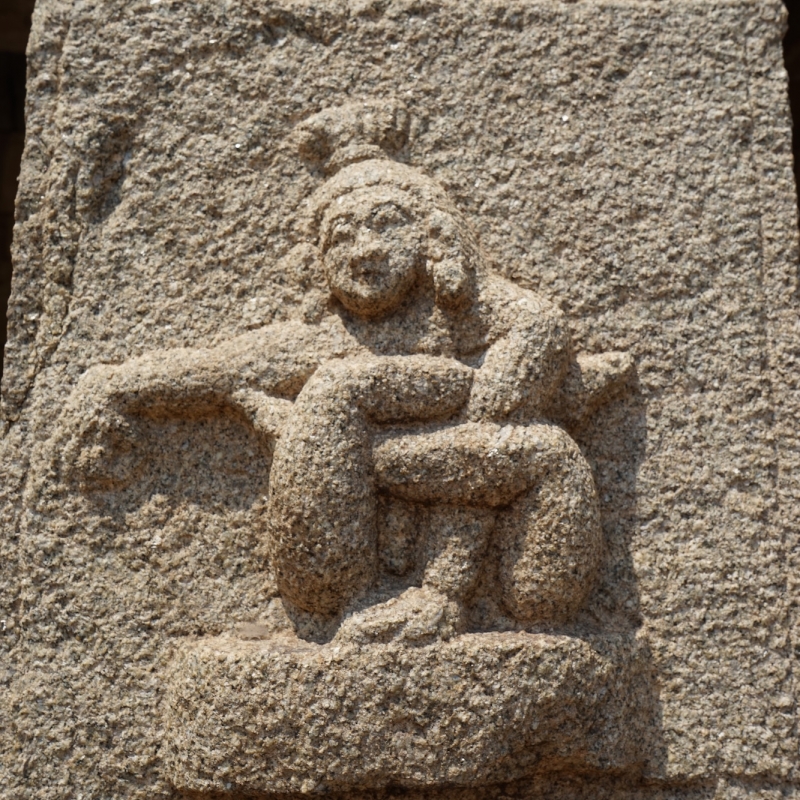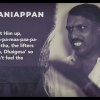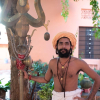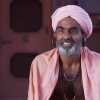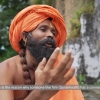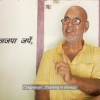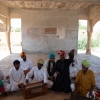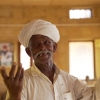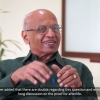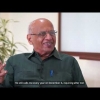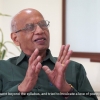'Āsana image on 16th-century temple pillars at Hampi, Karnataka'. Photo by Dr James Mallinson and Dr Daniela Bevilacqua, Haṭha Yoga Project
Introduction
Yoga has ancient roots in the Indian subcontinent, where it has been practised for millennia (Mallinson and Singleton 2017). Although common, core themes prevail throughout its history, the theory and practice of yoga show variation and development across time, geographical location and religious affiliation: new practices arise, others die out, and different metaphysical and philosophical contexts produce new associations for the term ‘yoga’. However, in certain milieus inside and outside India, during the past century and a half, yoga has undergone significant and rapid change in response to the globalisation of its practices and ideas. Modern science (Alter 2004), biomedicine (Alter 2005, 119-46), ‘alternative’ medicine (Fuller 1989), psychology (Coster 1934), physical culture (Singleton 2010), varieties of ‘western esotericism’ (De Michelis 2004), and ‘New Age’ spirituality (Hanegraaff 1998) are some of the ‘modern’ modalities that have been brought to bear on yoga, and have sometimes substantively altered how it is perceived and practised—perhaps especially where yoga has been ‘imported’ into social, cultural and religious contexts very different from those where it originated. In recent years, yoga has become a multi-million dollar industry worldwide[i], and has become a component of the social and personal life for millions of people outside of India. Phenomena such as these constitute a new chapter in yoga’s history, for which we can use the shorthand term ‘modern yoga’.
The multifarious ‘modern’ forms of yoga in the world today exist in a tangled, recursive relationship to ‘traditional’ yogas, by which we mean those forms of yoga—usually in India and contiguous countries, chronologically prior but continuing into the present—that were not or have not been significantly influenced by the forces of globalisation. ‘Modern’ yoga rarely stands in isolation from its ‘traditional’ counterpart, but rather inhabits a complex and dynamic sphere of innovation, revision and continuity with regard to tradition. The term does not refer to a discreet, isolated phenomenon or a self-conscious movement, but to a mutable and varying set of relations. By the same measure, ‘traditional’ forms of yoga may also be porous to the influence of, for example, modern technology[ii] and a certain degree of ‘globalisation’ has always been present through yoga’s history[iii]. Rather than a particular kind of yoga, then, modern yoga (like ‘traditional yoga’) is a heuristic, conceptual category that can help to name and frame a historical phenomenon that had until recently remained outside the attention of scholarly studies of yoga. The term ‘Modern Yoga’ (capitalised) was first used in a typological sense by Elizabeth De Michelis (2004), and has since developed into its own field of academic inquiry.
The Modern Yoga Renaissance[iv]
De Michelis traces the intellectual origins of modern yoga to the Bengali renaissance of the mid-nineteenth century, in particular, to the Brahmo Samāj, a cultural association founded in 1843 by Raja Rammohan Roy (1774–1883). Roy propounded an earthly, utilitarian religion, and helped to establish the Unitarian Mission in Bengal in 1821. He was influential in spreading Hindu ideas abroad, such as to Emersonian Transcendentalism in the US. It was out of such revisionist enterprises, argues De Michelis, that future modern yoga forms would take shape. Another leader of the Brahmo Samāj, Keshubchandra Sen (1838–84), was instrumental in furthering the dialogue between neo-Hinduism, Western esoteric and occultist culture, Unitarianism and American transcendentalism (De Michelis 2004). He spoke of a special Hindu ‘yoga faculty’, and imagined a ‘magic wand of yoga’ by which 'we command Europe to enter into the heart of Asia, and Asia to enter into the mind of Europe […] a commingling of oriental and occidental ideas and principles' (Sen 1901:484–85).
Sen’s vision of a universalist rational faith which could synthesise ancient Indian religious culture with the insights of (Western) science, philosophy and comparative religion anticipates and informs the influential experiments in yoga later undertaken by another Brahmo member (and disciple of Shri Ramakrishna, 1836–1886)[v] Swami Vivekananda (born Narendranath Datta, 1863–1902). In 1893, Vivekananda attended the World’s Parliament of Religions in Chicago, presenting himself as a monk of the Daśanāmi Saṃpradāya[vi] (De Michelis 2004:112). He was adopted by the esoteric avant-garde of East Coast America. He subsequently authored a number of books based on his lectures, written with his American audience in mind. His Rāja Yoga of 1896, one of the most important foundational documents in the history of modern transnational yoga, is in part a translation of Patañjali's Yogasūtras, and in part an elaboration of practical yoga techniques. It is to a great extent an amalgam of popular Western esotericism, modern European philosophy, humanistic psychology and science with ‘classical’ (viz. Pātañjala) yoga (De Michelis 2004). Vivekananda became 'the first teacher of yoga in the West' (Killingley 2013) and his work formed a blueprint for many subsequent global experiments in yoga, particularly in Europe and America.
Equally important in the modern global transformation and dissemination of yoga was the Theosophical Society, an esoteric spiritual organisation founded in 1875 by Helena Petrovna Blavatsky (1831–1891) and Colonel Henry Steel Olcott (1832–1907) (Godwin 1994). Theosophical interpretations of yoga were far-reaching, and the society’s literary output was immense. It is not without considerable reason that Blavatsky could claim, in 1881, that 'neither modern Europe nor America had so much as heard' of yoga 'until the Theosophists began to speak and write' (Blavatsky 1982:104).
Science, Medicine and Psychology
In the late-nineteenth and twentieth centuries, yoga became the object of scientific and medical inquiry. Early pioneers, steeped in the language of modern science, sought to legitimise yoga by subjecting it to scientific scrutiny (Alter 2004; Singleton 2010). At this time, yoga had a reputation abroad and among the colonial powers in India as mere superstition, and if it was to be taken seriously by the rest of the world, it would have to be renovated in conformity with the values and standards of scientific thought (Alter 2004; Singleton 2010). As a result, modern anatomical and biomedical notions often came to displace or superimpose themselves upon traditional conceptions of the yogic body (see Chap 5, Mallinson and Singleton 2017). For example, an 1888 article, claimed to be ‘the oldest attempt in the direction of scientifically interpreting the Yogic anatomy’[vii], by the renowned Swami Kuvalayananda (see below), set the agenda for much future scientific inquiry into yoga by identifying the nāḍīs and cakras of the yogic body with the conduits of the spine and the plexuses of the anatomical body—an identification that was later reinforced by many other authors (such as Kuvalayananda himself and others like Vasant Rele)[viii], and is still pervasive in popular transnational yoga today.
In the first half of the twentieth century, the most influential proponents of ‘scientific’ yoga were the guru-bhais Sri Yogendra (1897–1989) and Swami Kuvalayananda (1883–1966), who founded two of the earliest modern yoga centres in India: The Yoga Institute in Santa Cruz (Bombay), and Kaivalyadhama in Lonavla. Yogendra spent several years in the United States (1919–1923), where he worked with a number of avant-garde doctors and naturopaths. His work on yoga integrates their thinking as well as the latest technologies of science and biomedicine, and focuses primarily on health and therapy (Alter 2014:60–82). Kuvalayananda conducted some of the earliest scientific tests on the physiology of (haṭha) yoga and, like Yogendra, focussed greatly on the curative and therapeutic benefits of yoga (Alter 2014). Their scientific and biomedical work had a marked effect on the understanding of yoga practices and their perceived purpose that endures in globalised yoga today.
Modern yoga also has a tangled and ongoing relationship with modern psychology. For example, Swami Vivekananda was fascinated with psychology, and asked William James, the 'Father of American Psychology', to write the preface to his Rāja Yoga (De Michelis 2004:171). James himself was interested in yoga and aware of Vivekananda’s work[ix]. We might also mention James H. Leuba's The Psychology of Religious Mysticism (1925), C.G. Jung's 1932 seminars on kuṇḍalinīyoga, Geraldine Coster's Yoga and Western Psychology (1934), as well as yoga-inspired psychosomatic therapies (‘body psychotherapy’) arising from the work of Freud’s student Wilhelm Reich (1897–1957); and more recent psychotherapeutic postural yoga systems like Phoenix RisingTM and ‘inversion therapy’ as other instances of yoga’s dalliance with psychology[x]. In short, in modern globalised yoga, popular psychological modalities such as these have commonly provided a frame for understanding how yoga functions, to the extent that yoga itself has come to be commonly understood in these terms.
‘Modern Postural Yoga’[xi]
Perhaps the most prevalent and visible [facet] of yoga in the modern, globalised world is the practice of āsana, the physical postures of yoga. Today, āsana is sometimes popularly conceived and promoted as a superior alternative to ‘conventional’ physical culture, a ‘holistic’ exercise regime which contributes to the improvement of health, the reduction of stress and overall well-being[xii]. While such concerns are not absent from ‘traditional’ (haṭha) yoga, they have been greatly expanded and foregrounded in contemporary globalised yoga. One context for understanding the remarkable development of āsana within the contemporary global contexts is as an outgrowth of yoga's creative dialogue with the global physical culture movement, which flourished in the late-nineteenth and twentieth centuries, often in the context of emergent nationalisms[xiii]. During this time, new technologies of the body, mind and spirit, as well as the new or revisioned cultural or ideological frameworks that went along with them, were developed and disseminated across the globe—through photography, print media and travelling teachers. In India and abroad, physical culture enthusiasts experimented with the potential of yoga (in particular, [haṭha] yoga) as a way to build national and personal health, strength and vitality. Yoga enthusiasts experimented with the new resources offered by modern physical culture. In practice, yoga and physical culture came to be regarded by many as allied, compatible sciences, with the same goals and interchangeable methods[xiv].
In the early decades of yoga’s spread around the world, āsana was not a major component of popular do-it-yourself primers. Vivekananda, in fact, recommended against its practice (Singleton 2010:70–75). From the 1920s and 1930s onwards, however, āsana started to become popular, thanks to the efforts of teachers and authors like Shri Yogendra and Swami Kuvalayananda (who, alongside their focus on science, promoted yoga postures as a method of physical culture), Swami Sivananda (1887–1963) and his disciple Swami Vishnudevananda (Strauss 2005), Bikram Ghosh (Armstrong 2018), K.V. Iyer (Goldberg 2017), and T. Krishnamacharya (1888–1989). Krishnamacharya’s students B.K.S Iyengar (1918–2014) and Shri K. Pattabhi Jois (1915–2009) have been particularly important in disseminating a particular postural vocabulary to millions of people around the world.
Conclusion
This has been a very brief, schematic introduction to a handful of salient features of transnational modern yoga. Although we can recognise certain general global trends, there are obvious significant local variations, and what is true in certain cases may not be true (or be less so) in others. It is, therefore, important to consider each manifestation of ‘modern yoga’ in its particular historical context, recognising that there may, in fact, be multiple local modernities at play, and not just the kind of modernity we associate with, say, European Enlightenment ideals, (modern, Western) science and biomedicine, globalisation, colonialism, technology, and so on. The rubric of ‘modern yoga’ is, arguably, a useful theoretical tool insofar as it brings to light particularities of yoga’s global development in recent times, and in so doing adds to the wider history of yoga. Although it is inevitable that this should involve some comparison of what is innovative and discontinuous with ‘tradition’ in this history, separating ‘modern’ from ‘ancient’ may not be a feasible goal. Indeed, in examining transnational yoga’s developments in the modern age, it quickly becomes apparent that precise origins and clear genealogies for practices and beliefs are difficult to pin down; insofar as borrowing, adaptation, mutation and rewriting are usually the rules in these developments. Like an open-source computer code, modern yoga has been altered, adapted and rewritten by specialists and amateurs alike. So varied and divergent are its adaptations, indeed, that recourse to the original application(s)—viz. ancient, ‘traditional’ yoga(s)—is on its own insufficient to explain the complexities and innovations that characterise the particular version at hand. In other words, modern yoga is not simply a more contemporary manifestation of yoga as it always has been, but neither does it stand in isolation to that venerable past. In many cases, it represents the creative interpretative efforts of individuals (and movements) to make yoga relevant and applicable to a radically altered modern world. In so doing, what yoga means and, therefore, what yoga does, may undergo profound change.
Notes
[i] For example, the recent “Yoga in America” study by Yoga Alliance revealed that Americans spent US$16 billion on yoga during 2016 (Online at: https://www.yogaalliance.org/2016YogaInAmericaStudy)
[ii] For example, the recent “Yoga in America” study by Yoga Alliance revealed that Americans spent US$16 billion on yoga during 2016 (Online at: https://www.yogaalliance.org/2016YogaInAmericaStudy)
[iii] Two examples of this might be Greek encounters with the so-called Gymnosophists of India during the reign of Alexander the Great (on which see Halbfass, India and Europe, 11-13), and the Mughal encounter with yoga and yogis (on which see Ernst, ‘Accounts of Yogis in Arabic and Persian Historical and Travel Texts’, 409–26).
[iv] The term ‘modern yoga renaissance’ was coined by Shri Yogendra.
[v] Ramakrishna drew significant attention from early Western scholars of India, such as:
Müller, Ramakrishna, His Life and Sayings.
Rolland, Ramakrishna, the Man-Gods, and the Universal Gospel of Vivekananda.
Jeffrey, Kali’s Child.
[vi] Also see Seager, The World’s Parliament of Religions.
[vii] See: Kuvalayananda, Popular Yoga: Prāṇāyāma, 3; Basu, ‘Anatomy of the Tantras’; Singleton, Yoga Body, 50.
[viii] See: Rele, The Mysterious Kundalini.
[ix] See, for example: James, ‘The Energies of Man’, 321–32.
[x] For an example of Phoenix Rising in action, (see http://www.healingpath.co.uk/phoenix-rising-yoga-therapy/). For an example of ‘inversion therapy’ as a form of ‘Raja Yoga’ (see http://www.inversiontherapy.net/).
[xi] The term ‘Modern Postural Yoga’ is first used as one of the sub-types of Modern Yoga in De Michelis 2004.
[xii] Indications are numerous and easy to find. As a single example, see: http://medical-dictionary.thefreedictionary.com/Yoga+exercise [accessed 31 March 2013].
[xiii] See: Anderson, Imagined Communities; Mc Donald, ‘Physiological Patriots’, 343–57.
[xiv] This, and what follows in this section, is the main topic of my 2010 book Yoga Body, The Origins of Modern Posture Practice.
References
Alter, Joseph. 2004. Yoga in Modern India. Princeton: Princeton University Press.
Alter, Joseph. 2005. ‘Modern Medical Yoga: Struggling with a History of Magic, Alchemy and Sex’. In Asian Medicine, Tradition and Modernity 1(1):119–46.
Alter, Joseph. 2014. ‘Shri Yogendra: Magic, Modernity, and the Burden of the Middle-Class Yogi’. In Gurus of Modern Yoga, edited by Mark Singleton and Ellen Goldberg. New York: Oxford University Press.
Armstrong, Jerome. 2018. Calcutta Yoga: Buddha Bose and the Yoga Family of Bishnu Ghosh and Yogananda (Self-published).
Blavatsky, H.P. 1982. Collected Writings, Vol. III: 1881–1882. Wheaton Illinois: Theosophical Publishing House.
Coster, Geraldine. 1934. Yoga and Western Psychology: a Comparison. [S.l.]: O.U.P.
De Michelis, Elizabeth. 2004. A History of Modern Yoga: Patañjali and Western Esotericism. London: Continuum.
Fuller, R.C. 1989. Alternative Medicine and American Religious Life. New York: Oxford University Press.
Godwin, Joscelyn. 1994. The Theosophical Enlightenment. Albany, N.Y.: State University of New York Press.
Goldberg, Elliott. 2017. The Path of Modern Yoga: The History of an Embodied Spiritual Practice. Vermont: Inner Traditions.
Hanegraaff, W. J. 1998. New Age Religion and Western Culture. New York: State University of New York Press.
Killingley, Dermot. 2013. ‘Manufacturing Yogis: Swami Vivekananda as a Yoga Teacher’. In Gurus of Modern Yoga, edited by Mark Singleton and Ellen Goldberg. New York: Oxford University Press.
Mallinson, James, and Mark Singleton. 2017. Roots of Yoga. London: Penguin Classics.
Sen, Keshubchandra. 1901. Lectures in India I. London: Cassell.
Singleton, Mark. 2010. Yoga Body, the Origins of Modern Posture Practice. New York: Oxford University Press.
Strauss, Sarah. 2005. Positioning Yoga: Balancing Acts across Cultures. Oxford: Berg.
Further Reading
Anderson, Benedict. Imagined Communities: Reflections on the Origin and Spread of Nationalism. London: Verso, 1991.
Basu. ‘Anatomy of the Tantras’. In The Theosophist, March 1888.
Carl W. Ernst. ‘Accounts of Yogis in Arabic and Persian Historical and Travel Texts’. In Jerusalem Studies in Arabic and Islam 33, 2007.
Halbfass. Wilhelm. India and Europe: An Essay in Understanding. Albany: State University of New York Press, 1988.
James, W. ‘The Energies of Man’. In Science 25(635), 1907.
Kripal, Jeffrey. Kali’s Child: The Mystical and the Erotic in the Life and Teachings of Ramakrishna. Chicago: University of Chicago Press, 1995.
Kuvalayananda, Swami. Popular Yoga: Prāṇāyāma. Lonavla: Kaivalyadhama, 1935.
Mc Donald, Ian. ‘“Physiological Patriots”? The Politics of Physical Culture and Hindu Nationalism in India’. In International Review for the Sociology of Sport 34(4), 1999.
Müller, Max. Ramakrishna, His Life and Sayings (with a Review of the Book by Swami Vivekananda). Calcutta: S. Gupta, 1974 [1898].
Rele, V. G. The Mysterious Kundalini: The Physical Basis of the Kundalini (Hatha) Yoga according to Our Present Knowledge of Western Anatomy and Physiology. Bombay: D. B. Taraporevala, 1927.
Rolland, Romain. Ramakrishna, the Man-Gods, and the Universal Gospel of Vivekananda: A Study of Mysticism and Action in Living India. Mayavati: Advaita Ashrama, 1931.
Seager, Richard Hughes. The World’s Parliament of Religions: The East/West Encounter, Chicago, 1893. Bloomington: Indiana University Press, 2009.
